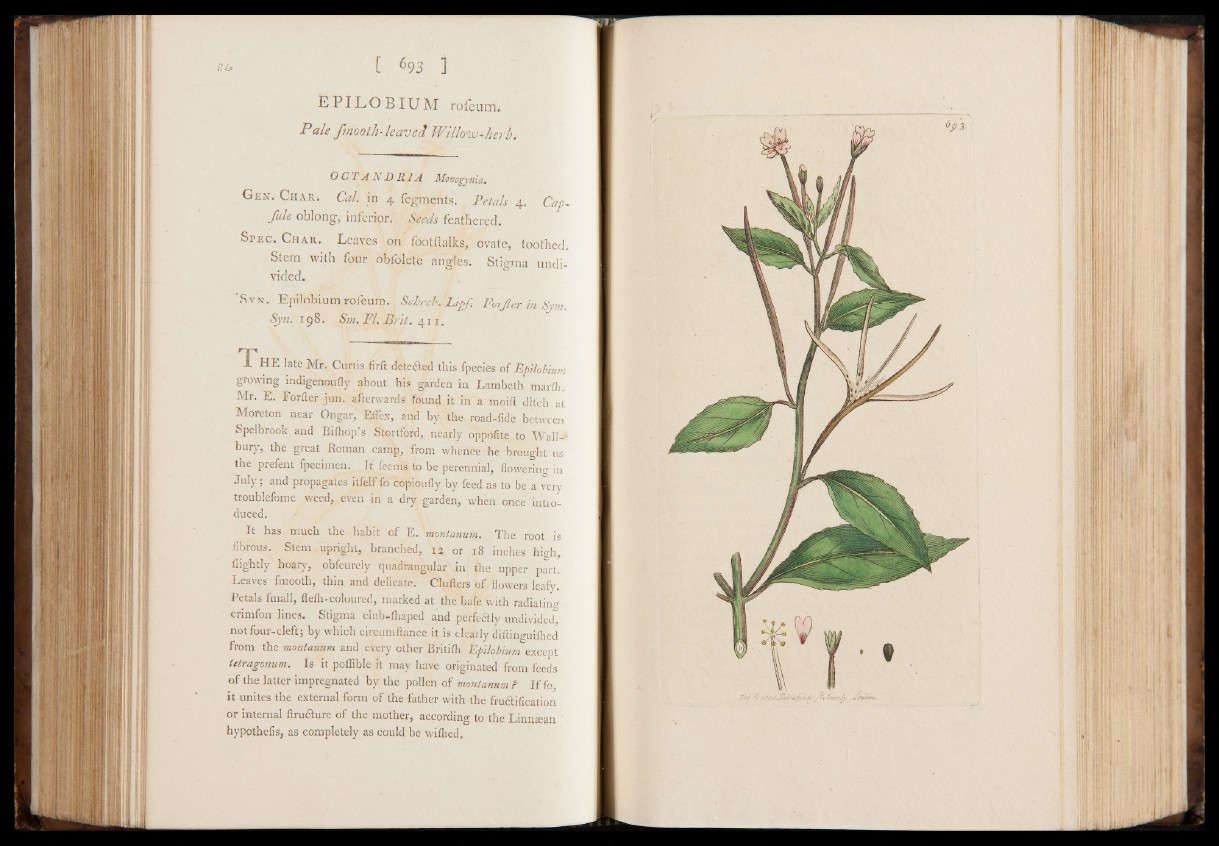
E P I L O B I UM rofeurrii
Pale fmooth-leaved Willow-herb.
OCT A N D R I A Monogynia.
Gen.' Char; Cal. in 4 fegments. Petals 4. Cap-
fu ie oblong, inferior. Seeds feathered.
Spec. Char. Leaves on footftalks, ovate, toothed.
Stem with four obfolete angles. Stigma undivided.
'Syn. Epilobium rofeum. Schreb. L ip f. Forfier in Sjm.
Syn. 198. Sm. FI. B rit. 4 1 1 .
l H E late Mr, Curtis firft deteaed this fpecies of Epilobium
growing indigenoufly about his garden in Lambeth marfh.
Mr. E. Forlter jun. afterwards found it in a moift ditch at
Moreton near Ongar, Eflex, and by the road-iide between
Spelbrook and Bi(hop's Stortford, nearly oppofite to Wall-"
bury, the great Roman camp, from whence he brought us
the prefent fpeeimen. It feems to be perennial, flowering in
July; and propagates itfelf fo copioufly by feed as to be a very
troublefome weed, even in a dry garden, when once introduced.
It has much the habit of E. montanum. The root is
fibrous. Stem upright, branched, 13 or 18 inches high,
(lightly hoary, obfcurely quadrangular in the upper part.
Leaves fmooth, thin and delicate. Clufters of flowers leafy.
Petals fmall, flefli-coloured, marked at the bafe with radiating
crimfon lines. Stigma elub-fliaped and perfectly undivided,
not four-cleft; by which circumftance it is clearly diftinguiflied
from the montanum and every other Britilh Epilobium except
Utragonum. Is it poffible it may have originated from feeds
of the latter impregnated by the pollen of montanum ? If fo,
it unites the external form of the father with the fructification
or internal (tru&ure of the mother, according to the Linnsean
hypothefis, as completely as could be wiflied.